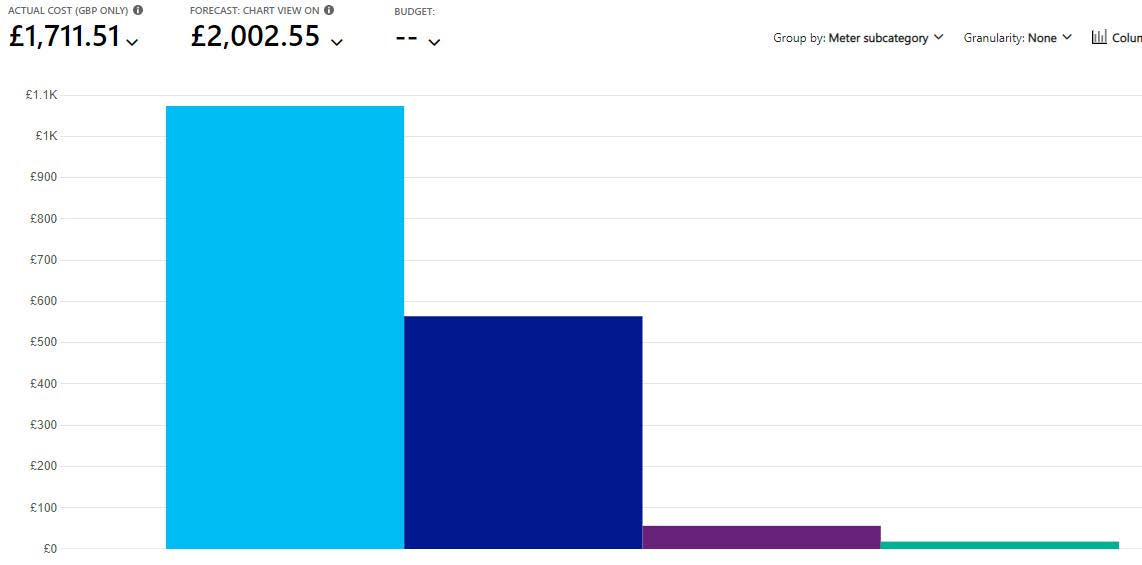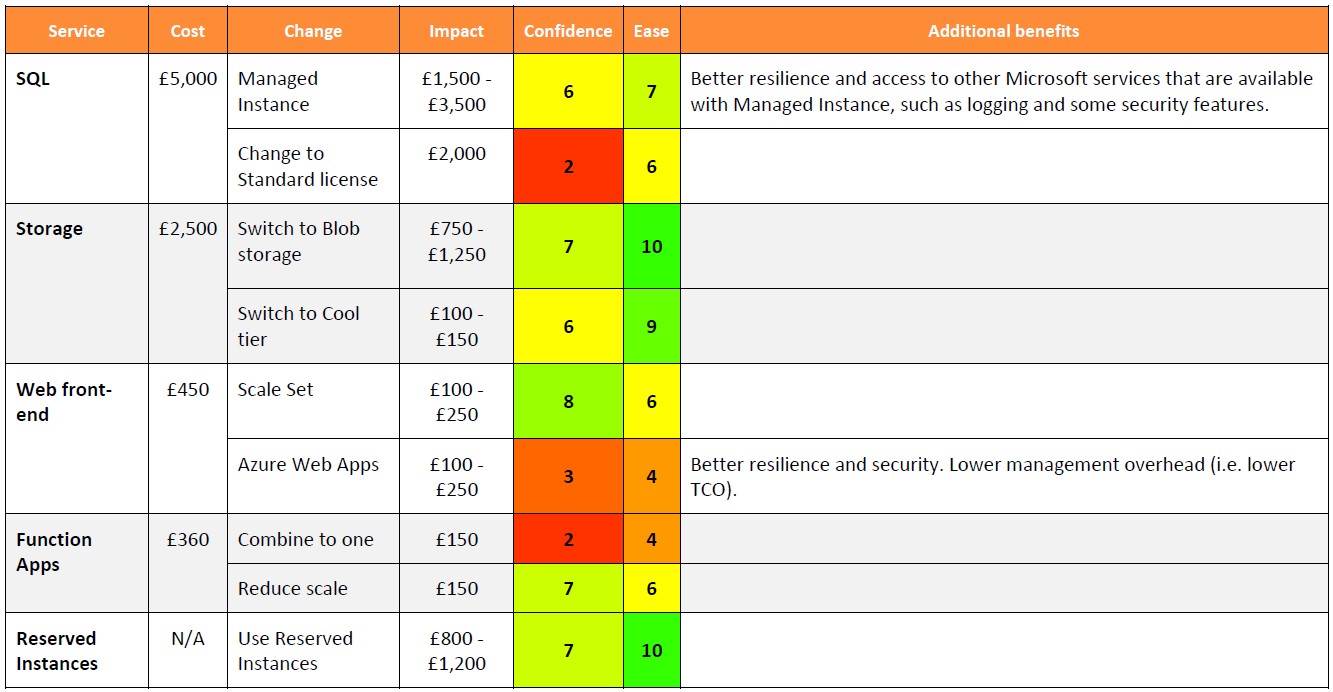
On a regular basis we are helping organisations to significantly reduce their Azure spend. There are many ways to achieve the same outcomes in Azure, but some are more expensive than others. With more than a decade of experience in optimising cost/performance in Azure, we can help you spend less and get more.
- Understand your current application and infrastructure architecture.
- Analyse your current spend and utilisation in Azure.
- Provide you with a set of options and recommendations for how you can reduce your Azure spend.
- Help you to implement the plan.
Each step is outlined in more detail below.
| Area | Example questions |
|---|---|
| What is your application architecture? |
|
| What does your infrastructure look like? |
|
| What is your code like? |
|
| What monitoring do you have in place? |
|
| What about your team? |
|
We will analyse your current cost and utilisation.
Overall
We will look at where you are spending the most to help focus in on where the most benefit can be obtained.

For each area
We will look deeper into the different areas of spend, to understand how that spend is made up and how much you are utilising those specific resources.


Notes:
- In order to do this analysis, we will need access to your Azure Subscriptions(s) with Reader access.
- Some Azure CSP’s have not enabled the option to let their clients view costs in the Azure Portal. If this has not been enabled for you, please ask your CSP to enable this for you, as we won’t be able to analyse the costs otherwise.
Once we have the spend and utilisation data, we will review each resource area to identify where savings may be made, in accordance with our internal checklist. This includes, but is not limited to:
- Right-sizing: Do you use the appropriate scale or performance tier for your purpose? Azure will often default to higher performance tiers than are required.
- Scaling opportunities: Can you use scheduled scaling to reduce the number of servers at quiet times? Can you use auto scaling to only spin up additional servers when needed?
- Sharing of resources: Can you share resources between different services? For example, use SQL Elastic Pools or share an App Service Plan between different websites and function apps.
- Architecture changes: Are there architecture changes you could make to reduce the cost? For example, by moving some types of data to cheaper options or using queues to reduce the always-allocated capacity.
- PaaS vs IaaS: Generally speaking, Infrastructure-as-a-Service (i.e. Virtual Machines) is often more expensive and has higher total cost of ownership than Platform-as-a-Service. Are there opportunities for moving IaaS to PaaS?
- Unnecessary services: It is common to deploy certain services either out of habit when coming from an on-prem background or because Azure defaults to suggesting them.
- Reserved Instances: Azure gives you substantial discounts on compute cost if you are willing to commit for one or three years in advance (you can still pay monthly).
Note: We will usually require one or more follow-up calls with you during this process to clarify various aspects.
Provide optionsWe will provide you with a series of options for how you can reduce your cost, similar to the following.

Note: This is just an example – the list is usually a lot longer.
ImplementNewOrbit can help you implement some or all of the suggestions:
- We can help to make the configuration changes in Azure.
- We can work with your development team to investigate further what code changes may be required to implement other changes.
- We can help design the architecture you need to make better use of cloud capabilities, reduce cost, and increase scalability.
Discover how our Azure services have helped clients across industries tackle challenges and innovate faster:
AI Talent and Culture: Closing the Expertise Gap
by Nathan Ball | 30/10/2025Building AI capability isn’t about hiring unicorns — it’s about empowering people. Discover how training, adaptable hiring, and purposeful partnerships can help close the AI expertise gap and create a culture where people and AI thrive together.
Unlocking Integration Testing With a Fake OIDC Identity Service
by Kelvin Stott, Jamie Round | 27/10/2025Integration testing with tools like Playwright helps cut costs and reduce risk — but third-party authentication (e.g. Microsoft Entra) often makes it fragile. Using a Mock OIDC service can remove that barrier, making tests simpler, faster and more reliable.
Using AI to write API documentation
by Maciej Kołodziej | 20/10/2025Writing API documentation is hard, but AI can make it collaborative. Maciej Kołodziej shows how using AI as a writing partner improves clarity, structure, and speed — turning technical docs into a smarter, iterative process.